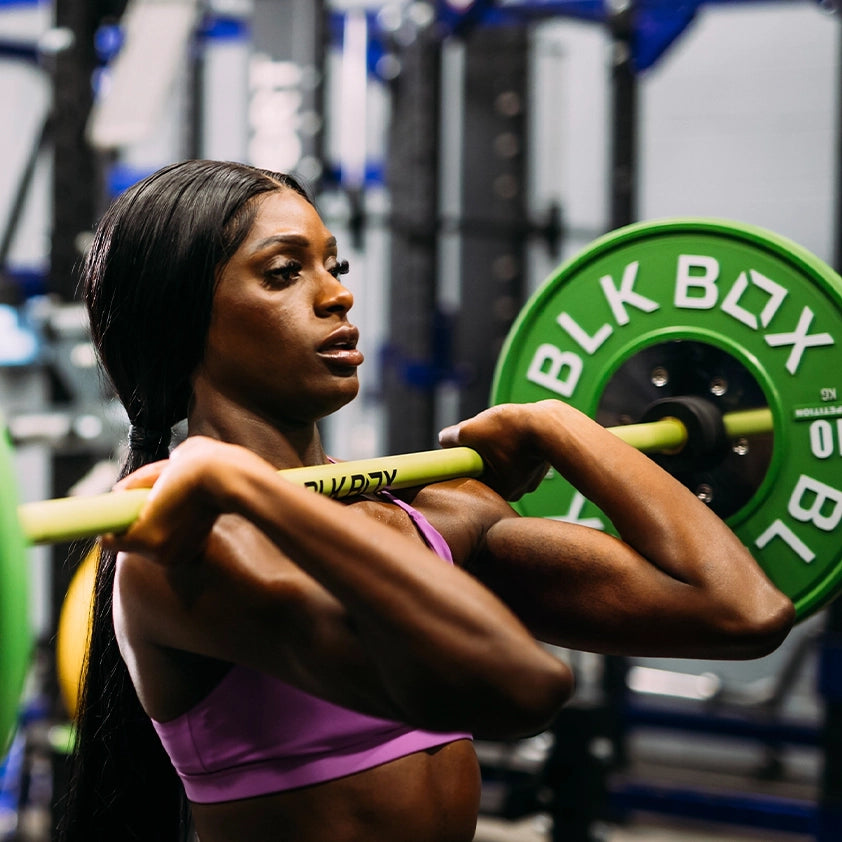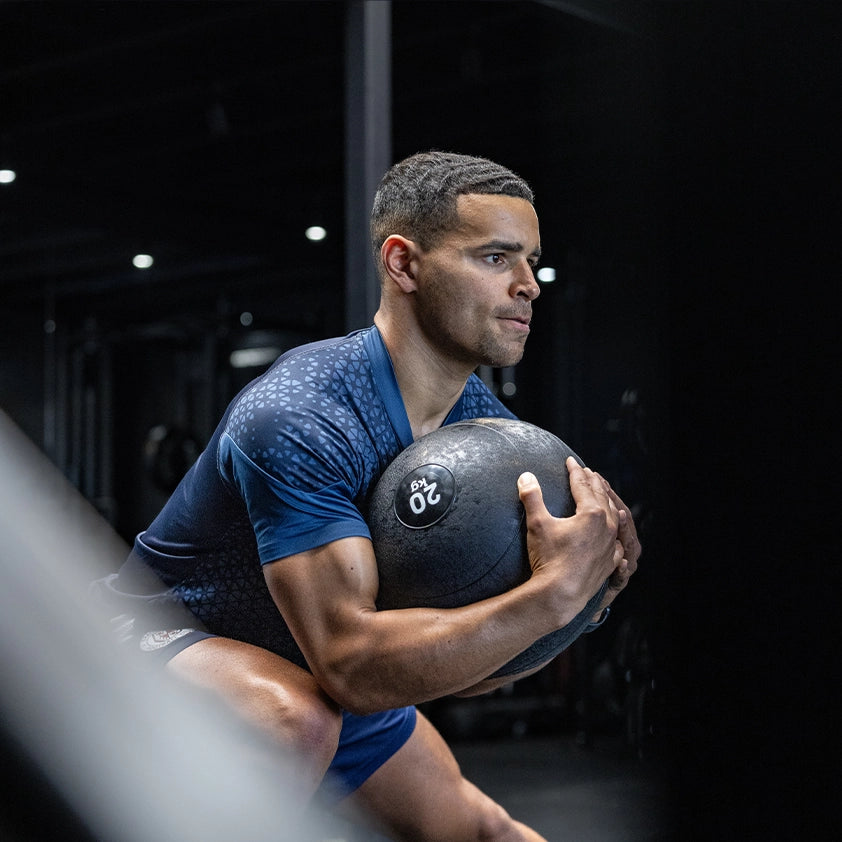What thickness means for your bumper plates and why it matters
 When it comes to strength training, details matter. The knurl on your barbell, the grip on your dumbbells, the texture of your flooring - all these small things make a big difference. And the same goes for bumper plate thickness.
When it comes to strength training, details matter. The knurl on your barbell, the grip on your dumbbells, the texture of your flooring - all these small things make a big difference. And the same goes for bumper plate thickness.
If you’ve ever loaded up a bar only to run out of space or found yourself wondering why some plates sit flush while others stack up like pancakes, you’re not alone. Plate thickness plays a crucial role in performance, durability, and overall training experience.
1. More weight, less space
One of the biggest advantages of thinner bumper plates is that you can fit more weight onto your barbell. This is particularly important for powerlifters, Olympic lifters, and anyone pushing heavy loads.
Standard barbells have a limited sleeve length (typically around 16 inches per side). If your plates are too thick, you’ll max out the bar’s capacity before you max out your strength.
For example, high-density competition-style plates are designed to be thinner, meaning you can load up more weight without running out of room.
✅ Best for: Heavy lifters, competitive athletes, strength training enthusiasts.
2. The drop factor: shock absorption and bounce
Thicker plates tend to have more rubber, which affects how they absorb impact. This is especially relevant in high-intensity environments where plates are being dropped repeatedly.
- Thicker plates = more shock absorption
- Thinner plates = a firmer, more controlled drop
For example, high-temp plates, which are often thicker, tend to have a softer bounce, while thinner, denser plates (like competition bumpers) provide a dead bounce, keeping the bar closer to the ground.
✅ Best for: Weightlifters, CrossFit-style training, facilities with multiple lifters sharing a platform.
3. Storage and space efficiency
If you’re working with limited storage space, thinner plates can be a game-changer. They take up less room on your weight tree, plate rack, or storage shelves, allowing you to maximise available space.
In a commercial gym or home gym, stacking more weight in a compact area means better organisation and accessibility.
✅ Best for: Home gym owners, facility managers, garage gyms with limited space.
4. Durability and longevity
Plate thickness often correlates with material density. High-quality rubber and steel inserts make thinner plates more durable over time.
- Thicker plates with lower density rubber may degrade faster with repeated drops.
- Thinner plates, especially competition or urethane-coated plates, tend to last longer.
If you want plates that can withstand years of hard training, consider density over just thickness.
✅ Best for: Anyone looking for long-term durability and a solid investment.
Choosing the right thickness for you
Ultimately, the right bumper plate thickness depends on how you train. If you’re a heavy lifter chasing PRs, thinner plates make sense. If you’re in a high-volume, high-intensity environment, slightly thicker plates might be more forgiving on the floor.
Whatever your goals, understanding plate thickness helps you make a better investment - one that suits your space, training style, and future strength gains.
At BLK BOX, we stock bumper plates with the right balance of thickness, density, and durability - because every detail counts when you're lifting for more.
Want to upgrade your setup? Check out our range of bumper plates here.















